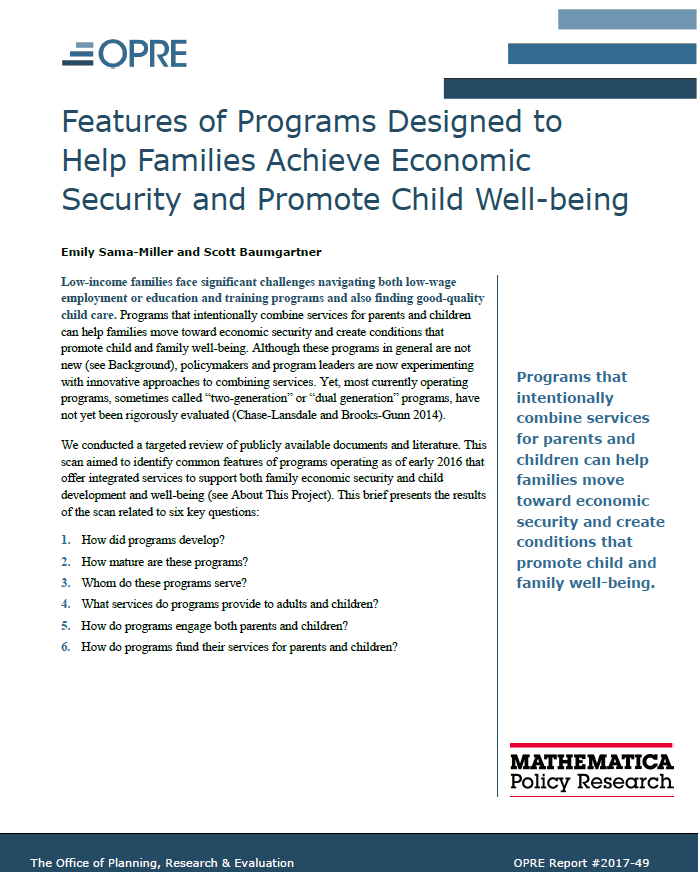Families on limited incomes can struggle to navigate low-wage jobs or education and training programs while also searching for quality early care and education for their children. Some programs provide integrated services to parents and their children in an effort to solve this problem. This practice is sometimes called a two-generation or whole-family approach. Although integrated programs are not new, few have been rigorously evaluated. The Administration for Children and Families in the U.S. Department of Health and Human Services funded the project called Integrated Approaches to Supporting Child Development and Improving Family Economic Security to help build the evidence base and provide policymakers and program administrators with the information they need to make informed decisions.
Two new resources from this project are now available. They include:
- “Exploration of Integrated Approaches to Supporting Child Development and Improving Family Economic Security,” a final report that details key findings from (1) a literature review, an environmental scan, and field work to identify and describe existing program models; (2) development of a conceptual framework to inform program design and research; and (3) an assessment of future directions for research and evaluation, which is especially important because the most recent wave of integrated programs for parents and children is still developing, and research can help.
- “Features of Programs Designed to Help Families Achieve Economic Security and Promote Child Well-Being,” a brief that summarizes results from an environmental scan of 52 active programs that combine services for children with services for parents. Highlights include: (1) Services for adults typically focused on helping them get a job and increasing their educational attainment and skill level. Most child-focused services consisted of center-based early care and education, although some programs also provided home-based services such as home visiting. (2) Most programs offered more than one type of service to parents and children, because families typically had more than one kind of need. (3) The programs had diverse funding sources, including federal, local, and private sector grants; most were locally operated.
For more information about these resources, please contact federal project officers Carli Wulff (Carli.Wulff@acf.hhs.gov) or Kathleen Dwyer (Kathleen.Dwyer@acf.hhs.gov) or project director Emily Sama-Miller (ESama-Miller@mathematica-mpr.com).
About The Project
This project, Integrated Approaches to Supporting Child Development and Improving Family Economic Security, was conducted by Mathematica Policy Research and Northwestern University for the Office of Planning, Research and Evaluation (OPRE), in the Administration for Children and Families (ACF) at the U.S. Department of Health and Human Services. It focused particularly on programs whose goals are both to improve the economic security of families and to support the development and well-being of children. These programs typically offer services to help parents get a job and increase their educational attainment and skill level and to foster the development and education of their children. The project was designed to give ACF, administrators and funders of programs with an intentional approach to serving parents and children together, and other stakeholders an overview of the current state of the field, including theory, program models, evidence from research on the programs, and directions for future research. Project activities included (1) a literature review, an environmental scan, and field work to identify and describe existing program models; (2) development of a conceptual framework to inform program design and research; and (3) an assessment of future directions for research and evaluation. Project information and publications are available on the project website.


